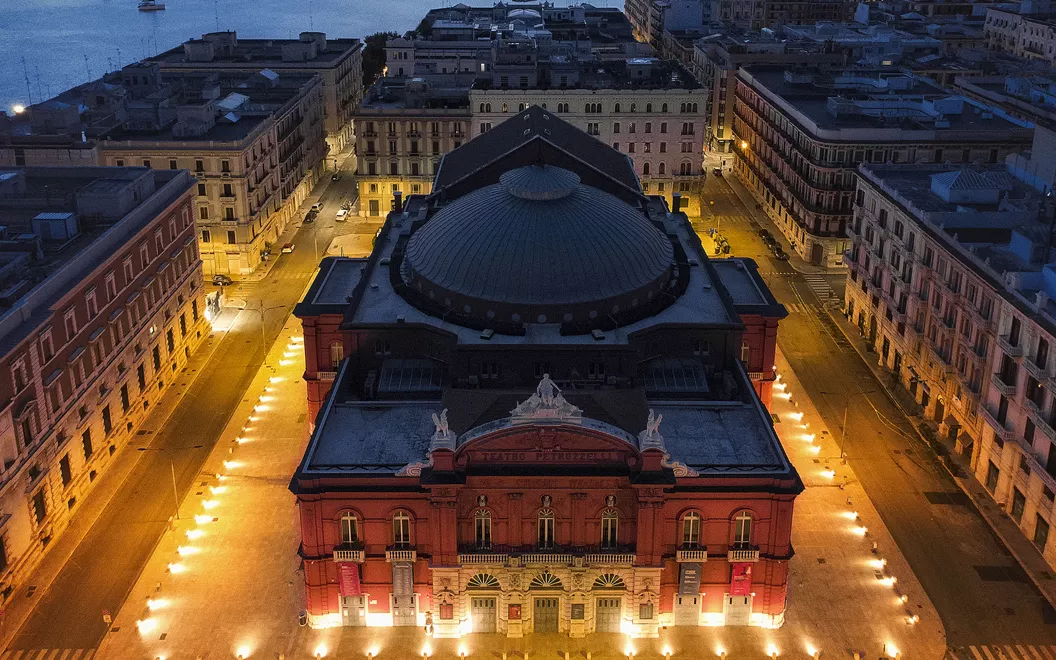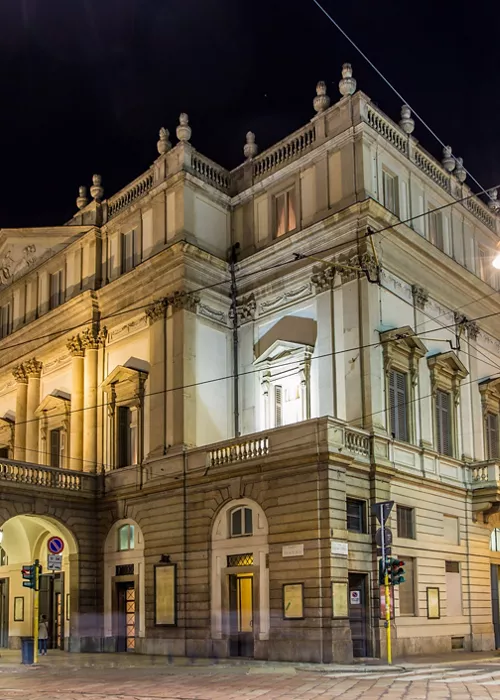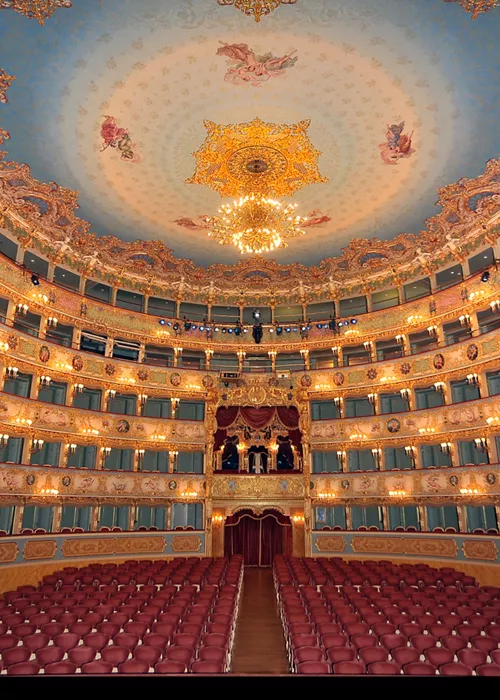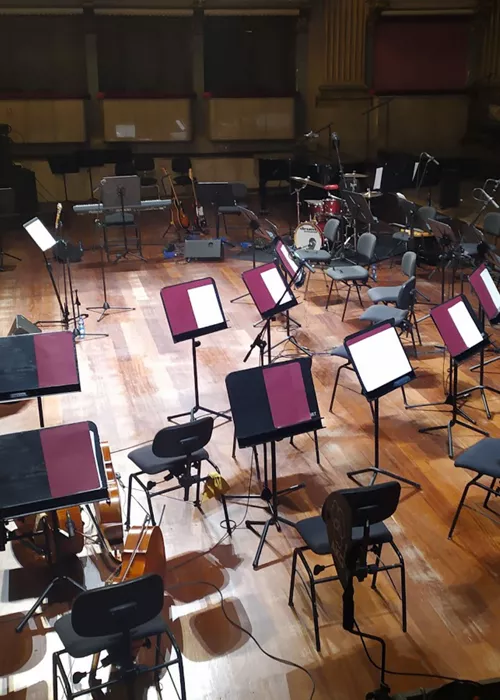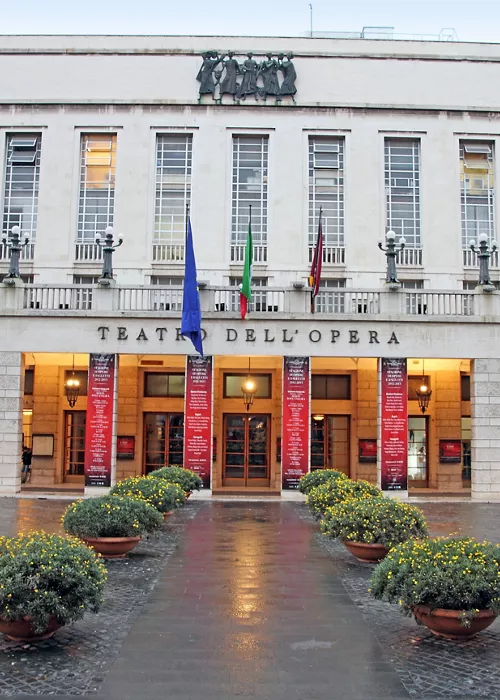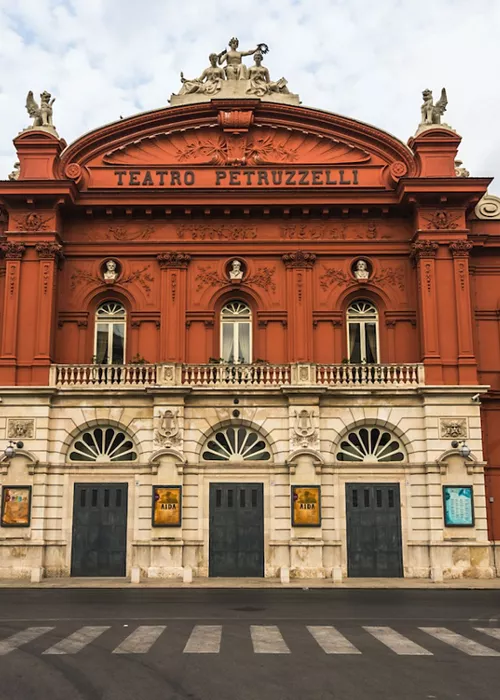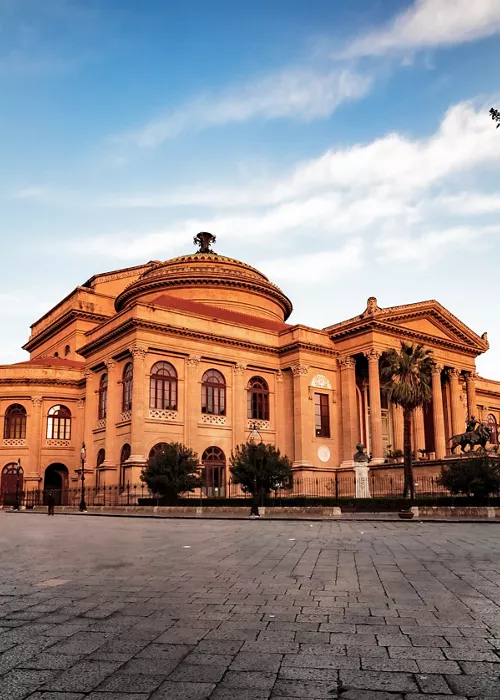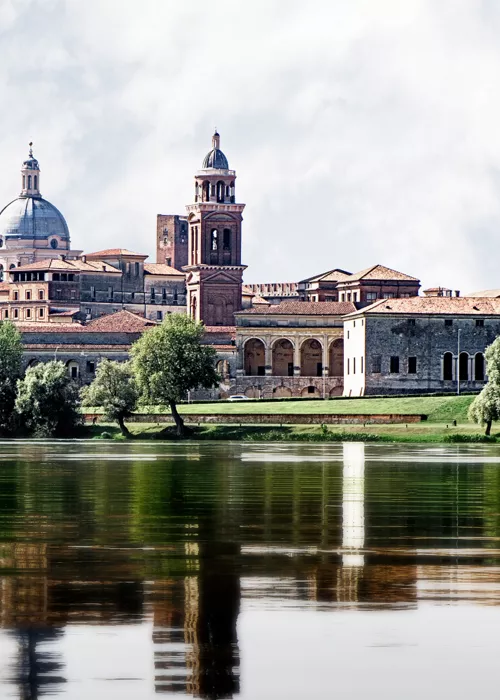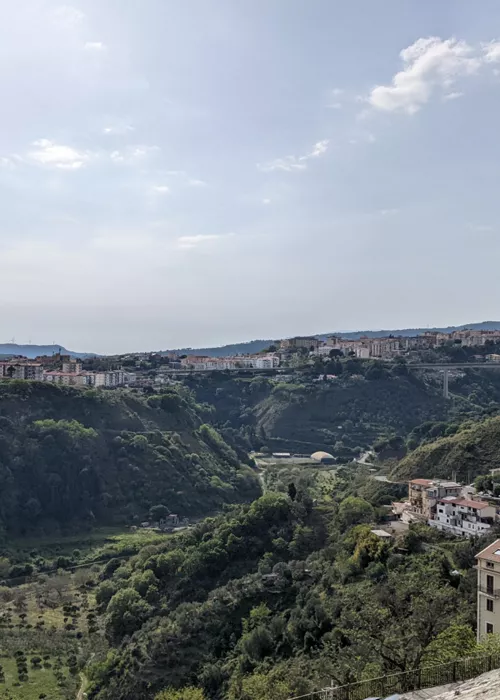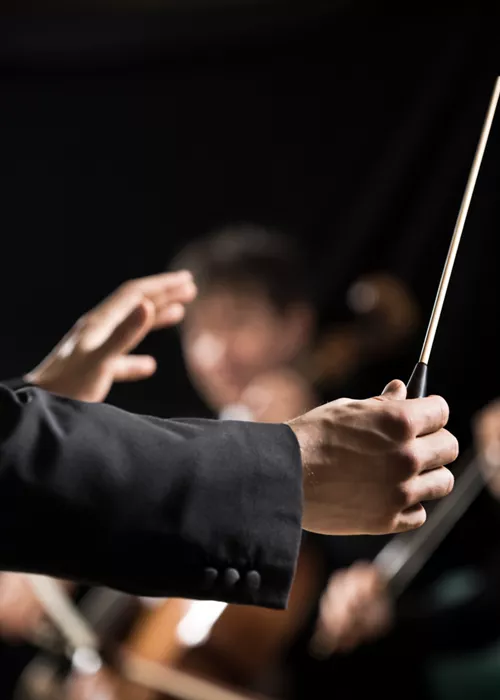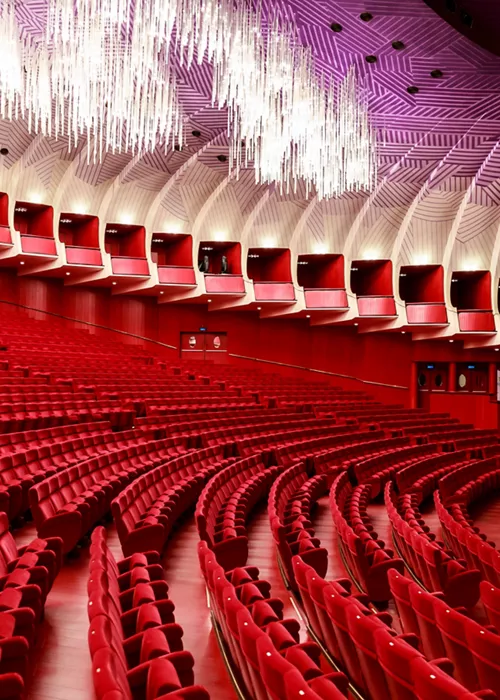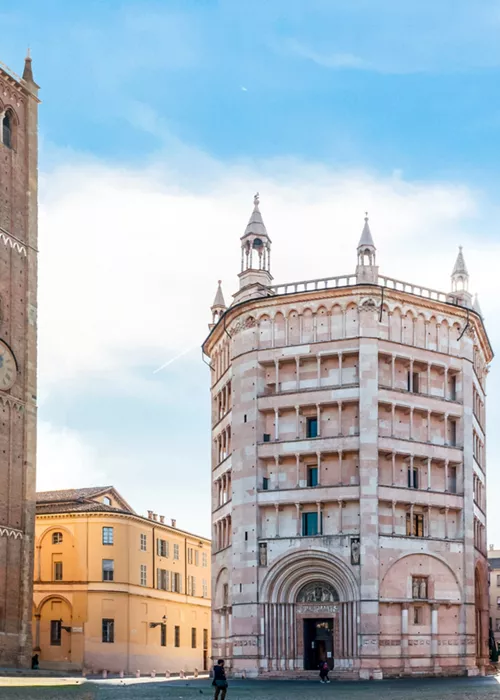Discovering Italy's most important theatres, special destinations for a unique experience
5 minutes
Index
Architectural gems, many of which can be accessed even if you don't want to attend the shows, are inextricably linked to the city in which they stand and are the custodians of fascinating stories, including a few little secrets.
Milan, Venice, Florence, and then Rome, Bari and Palermo: behind the doors of Italian theatres lie fascinating stories, legends and wonderful works of art. We will take you inside their beauty.
La Scala Theatre, Milan: the temple of worldliness
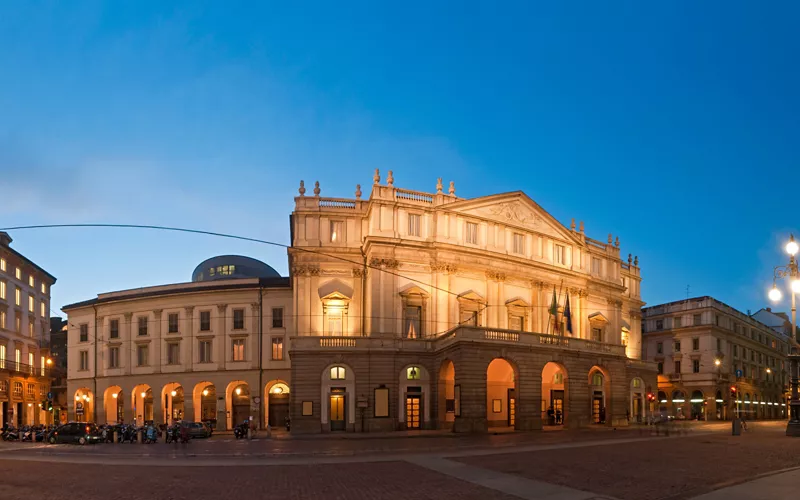
Among the most famous is La Scala Theatre in Milan, which owes its singular name to the church of Santa Maria alla Scala, demolished to make way for the theatre inaugurated in 1778. Designed by Giuseppe Piermarini to replace the Teatro Ducale destroyed in a fire, La Scala, as it is conventionally called, can be visited when there are no rehearsals or performances taking place. Accessible areas include the boxes, including the royal box, and the stage with its secrets. In particular, you can enjoy the charm of the Great Hall by looking out from the boxes of the third order.
You will discover the structure of a typical Italian theatre, gathered around the stage, which, however, is not entirely visible from every position. Today this may be a limitation, but in the days when La Scala was built it was not a problem, because going to the theatre was, first and foremost, a social occasion, a concept that no longer exists today. With the exception of 7 December, the day of La Scala's premiere, which always hosts illustrious personalities: whether for couple's debuts or for looks, for one evening the chatter of the worldliness of yesteryear is revived.
A visit to the theatre also includes an exhibition in several rooms tracing the history of music with displays dedicated to musical instruments, composers and famous singers. You can see real memorabilia!
La Fenice Theatre, Venice: risen twice from its ashes
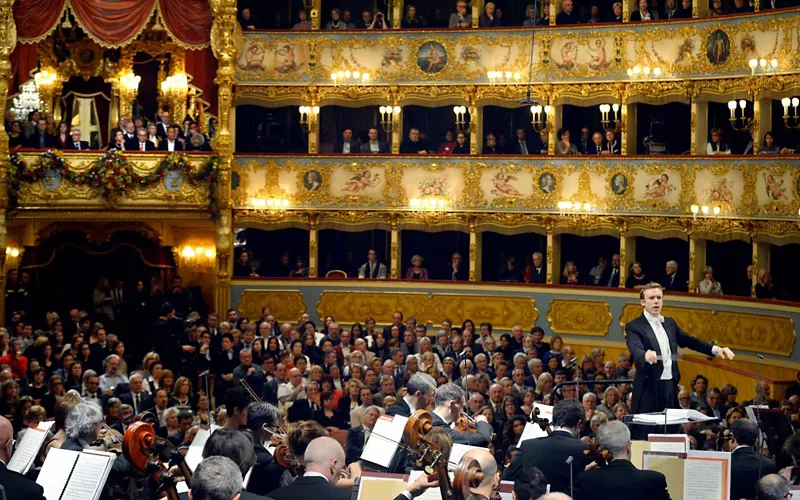
The La Fenice Theatre in Venice is also from the 18th century. Inaugurated in 1792, it is located in the Sestiere di San Marco, and was named so because, like the mythological animal, it symbolised the rebirth of the Noble Society of Palleteers, which had previously been forced to cede the San Benedetto Theatre to the noble Venier family.
A name a destiny, one might say, because La Fenice has been destroyed twice and rebuilt twice, both times after a fire. The first, in 1836, and the second in recent times, in 1996. The latter was a devastating arson attack: it took seven years of restoration to bring La Fenice back to its splendour. 'As it was, where it was' was the motto that inspired the work, the same motto followed for the reconstruction of St. Mark's Bell Tower after the collapse in 1902.
Today, as in the past, La Fenice is a triumph of late Baroque pageantry that fascinates and arouses wonder. In addition to the performance hall, the theatre has many other rooms, reserved for concerts and exhibitions, such as the permanent exhibition on Maria Callas, who performed here many times. An interesting fact? Today's entrance, which faces Campo San Fantin, was once the secondary one: nobles would arrive by gondola and access the theatre directly from the canal.
Tours: The theatre is open to the public every day, guided tours do not require a reservation, and tickets can be purchased directly at the venue.
Teatro Verdi, Florence: a record-breaking Tuscan show
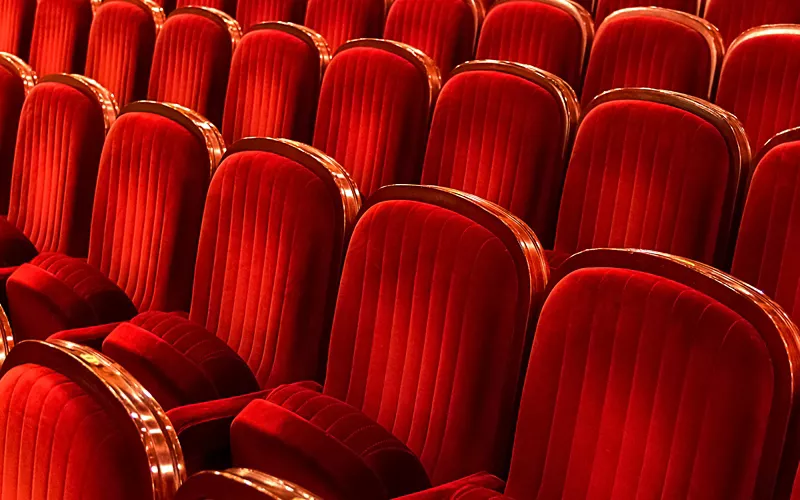
In Florence, the quintessential theatre is the Verdi. In its 160 years of history, it has certainly not experienced the same vicissitudes as La Scala and La Fenice, but it boasts a small record: it is the largest Italian theatre in Tuscany.
There are no guided tours in this case, because the facility is managed by a private entity. If you are passing through the city on a leisure or business trip, don't miss the opportunity to attend a performance: dance, drama, musicals, the choice of shows is extensive.
Opera House in Rome: a Renaissance temple
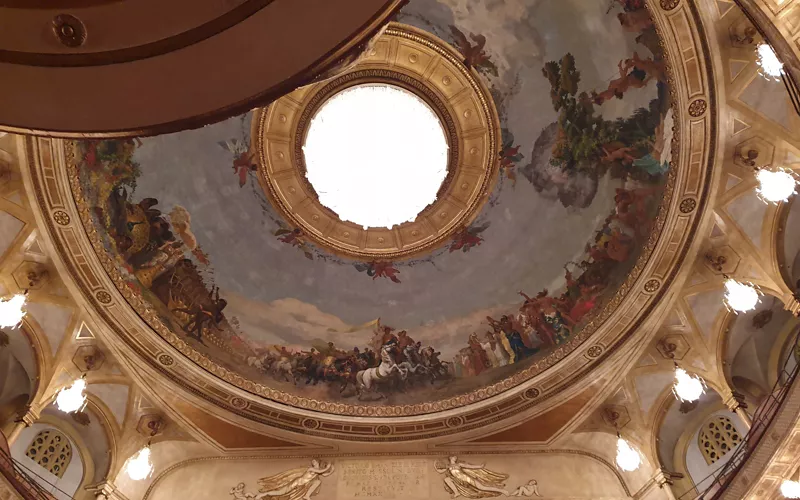
Inaugurated in 1880, after only 18 months of construction, the Rome Opera House has a sumptuous, neo-Renaissance style, in line with the tastes of the time. It was commissioned by the builder Domenico Costanzi, who realised the potential of an expanding city, such as Rome was at the time, not yet endowed with an imposing theatre that could make it a centre of culture in Italy and the world.
Among the unmissable sights is the dome frescoed by Perugian artist Annibale Brugnoli, which contributes to the structure's perfect acoustics.
Tours: the theatre is open for visits all week, to schools, organisations and associations that have an agreement with the theatre. If you are a private individual, on the other hand, you can opt for an exclusive visit; there are several options available: from one combined with a welcome cocktail, to one that also includes the scheduled show, to the possibility of attending a few moments of the rehearsals.
The Petruzzelli Theatre in Bari: saved by its own dome
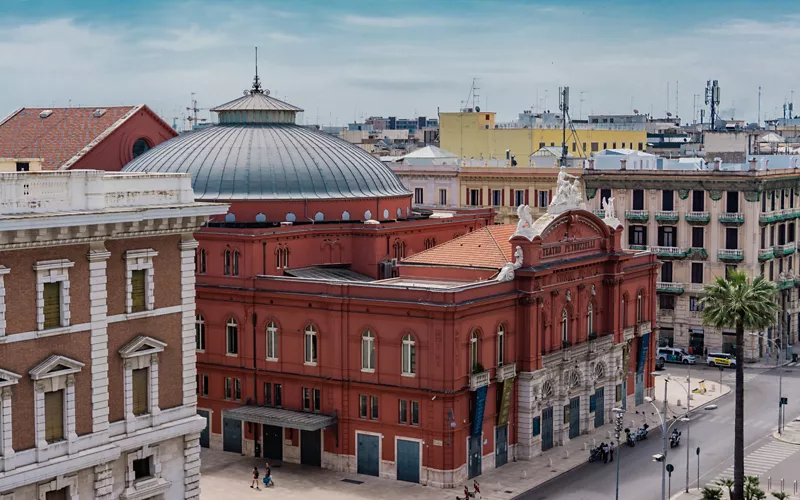
If your journey touches southern Italy, head for Bari and the magnificent Petruzzelli. The theatre is located in the city centre, on Corso Cavour. Almost the same age as the Teatro dell'Opera in Rome, as it was inaugurated in 1903, it shares with La Fenice the sad memory of a fire, which occurred in October 1991. An intentional act, again, but unlike the Venetian theatre, the damage was minor because the collapse of the dome, stifling the flames, preserved what remained buried.
Tour: reopened in 2009, today it can be visited. Schedules are published month by month on the facility's official website, and may vary according to rehearsals and performances.
Massimo Theatre, Palermo: the legend of the ghost
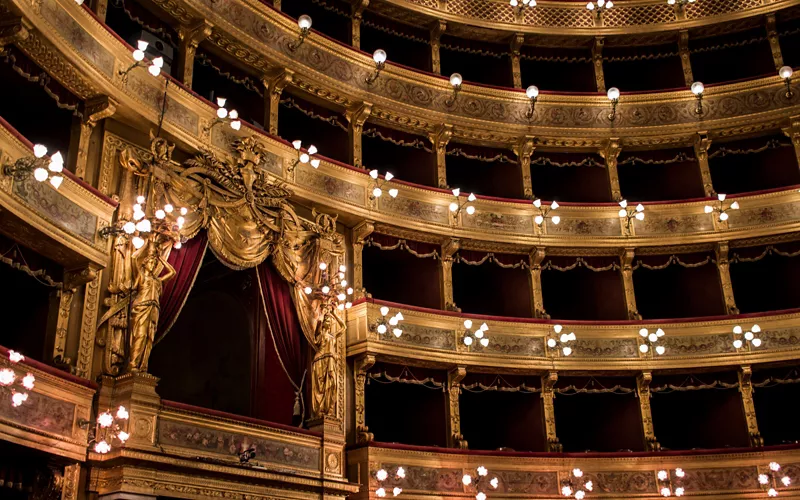
Our tour ends in Palermo, with the Massimo Theatre, which, with its 3200 seats, is the largest theatre in Italy.
Inaugurated in 1897 with Verdi's Falstaff, it stands where three churches and as many monasteries once stood.
This is the origin of one of the most mysterious legends about this imposing structure: the cemeteries attached to the convents were desecrated due to demolition. The tomb of a nun was also disturbed, whose ghost would roam the corridors and boxes without rest today, and those who do not believe in it might stumble over the so-called "nun's step" because of her.
There are also many interesting features. The Sala Pompeiana, one of the many rooms besides the main one where performances take place, is circular in shape, designed following an order that plays all on the number 7 and its multiples. A symbolism that goes back to the planets and the days, the seven deadly sins and the seven virtues, but also to the seven notes and the seven strings of the lyre, depicted in the Hall of Performances. Originally reserved for the nobility, it is also called the Echo Room because of its acoustics: as you approach the centre, the echo increases.

